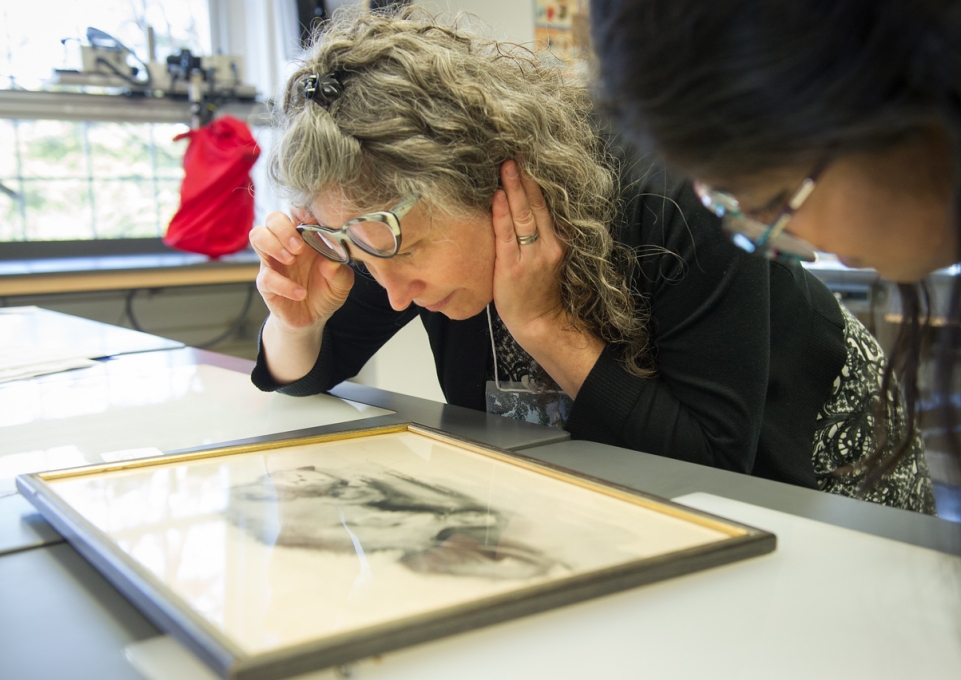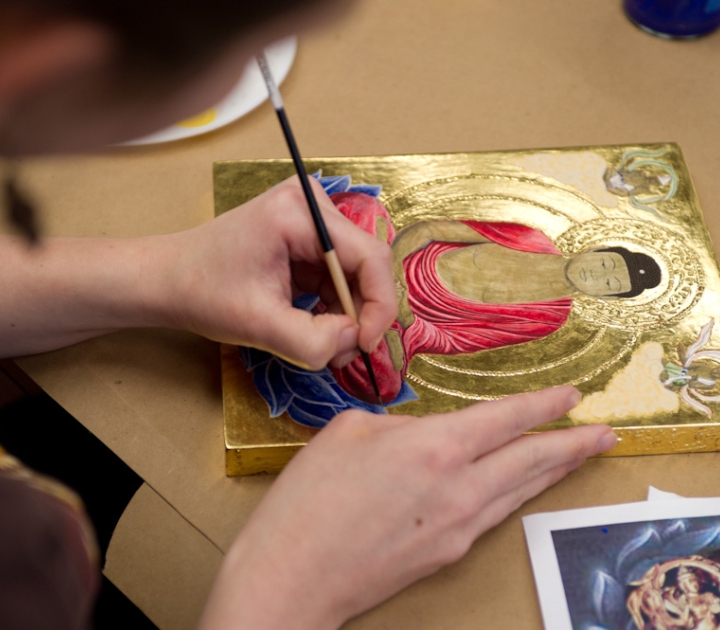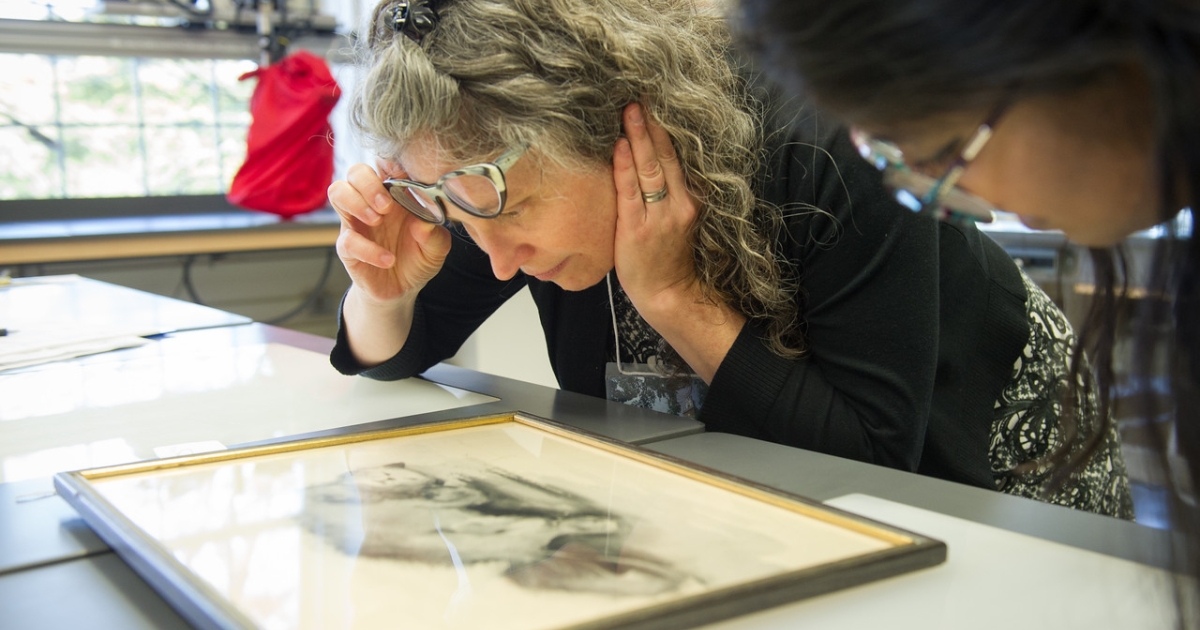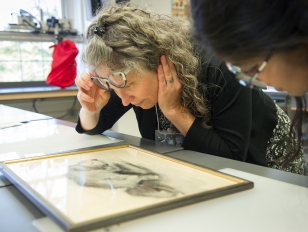
Following a two-year hiatus, Buffalo State’s Garman Art Conservation Department will open its doors to the public for the Fall Open House on Friday, October 28, from 4:00 to 7:00 p.m. in Rockwell Hall.
The popular free event includes tours of the second- and third-floor state-of-the art studios and labs. It also includes a rare glimpse into the conservation projects that faculty members and graduate students are working on.
“We are very excited to once again open our doors to the Buffalo public to showcase the amazing work that our professors and students do every day,” said Patrick Ravines, director and professor of art conservation. “I love having the opportunity to share that work with the public. You would be surprised to see the transformation of a work of art, historic document, or cultural heritage object once it has been stabilized and conserved.”
Some of the pieces on display this year include a diorama from Tuskegee University’s Legacy Museum and a number of centuries-old paintings undergoing treatment.
“One very interesting piece is a seventeenth-century Peruvian oil-on-copper painting, Christ Child with Instruments of the Passion, said Fiona Beckett, assistant professor of paintings conservation. “It’s on loan from the Thoma Foundation, Chicago, specifically for treatment and technical analysis. There has not been much study of Peruvian paintings, and the treatment and analysis of this painting will be useful to contribute to the knowledge in this area.”
Two other paintings from the nineteenth and seventeenth centuries, Family Gathering by Jacob Spoel and Dutch Cavalier by an unknown artist, respectively, were previously damaged and will require extensive treatments, Beckett said.

“I love having the opportunity to share that work with the public. You would be surprised to see the transformation of a work of art, historic document, or cultural heritage object once it has been stabilized and conserved.”
— Patrick Ravines, M.L.S., Director and Professor, Art Conservation
“Conservation work will include mending tears to the canvas and removing old degraded and yellowed varnishes,” she said. “These treatments will give a thorough insight into the work done by paintings conservators.”
The open house allows everyone from art enthusiasts to potential program applicants to learn more about the art conservation program and see the meticulous work required to conserve paintings, objects, and paper, noted Meredeth Lavelle, program manager for art conservation.
“A wide range of artwork will be on display, and faculty and students will give demonstrations on conservation treatment, imaging, and conservation science throughout the evening,” Lavelle said. “We’re really excited to be able to present the open house in person after two years during the pandemic when we could not.”
The 2022 open house also comes a year after the Garman Art Conservation Department announced a newly approved master of arts/master of science dual degree program. Buffalo State is now the only college or university in North America to offer a dual graduate degree in art conservation.
“This is an auspicious time for our department,” Ravines said.
For more information about the open house, please call (716) 878-5025 or visit the department website.
About the Garman Art Conservation Program
Founded in 1970 in Cooperstown, New York, as a graduate program affiliated with the State University of New York College at Oneonta and the New York State Historical Association in Cooperstown, the art conservation program moved to the Buffalo State campus in 1987. A fiercely competitive three-year program that admits only 10 students a year, it requires applicants to have a facility with the hard sciences and an abiding understanding of fine art and cultural heritage. Graduates find positions with major institutions include the Smithsonian Institution, the National Gallery of Art, the Library of Congress, the Metropolitan Museum of Art, and the Museum of Modern Art.



